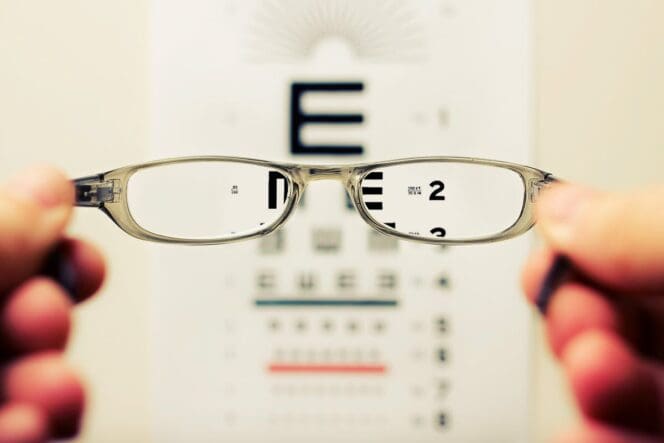Home / Presbyopia /
Treatment for Presbyopia
Presbyopia occurs when your eyes gradually lose their ability to see up-close things clearly, a common and a highly treatable condition.

Corrective treatments start with prescription eyeglasses, contact lenses and surgery. Treatments usually address the key symptoms of the condition, which include blurriness, and tired eyes
Another symptom is when you start holding things farther away from your eyes to see them without being blurry. Other signs include tiredness in the eyes when you focus on something nearby.
Diagnosis is a basic eye exam, including an eye health exam and a refraction assessment. Your eye-care provider will use various tools and instruments to test your eyes.
Treatment for Presbyopia
Once your eye doctor diagnoses presbyopia, they recommend various treatment options to correct your vision. The options available include:
Eyeglasses
Eyeglasses provide a safe and straightforward way to correct presbyopia. Eyeglasses come in many types, including:
- Reading glasses: These are ideal if you do not have any other vision problems. You only use them for reading and remove them when not reading.
- Bifocals: These lenses come with a visible horizontal line, with the distance prescription being above the line. Below the line is the reading prescription.
- Trifocals: These glasses provide corrections for close-up work, mid-distance vision such as computer screens and distance visions. The lenses have two visible horizontal lines across them.
- Progressive multifocal glasses: The lens on these glasses have no visible horizontal lines, but they provide varying powers for close-up, mid-distance, and distance vision correction.
- Office progressives: The lens provides corrections for close-up and computer-distance work. Use them for reading or screen work and remove them when walking or driving.
Contact Lenses
If you do not like wearing glasses, your doctor may prescribe contact lenses to improve presbyopia. However, contact lenses may not be a favorable option if you have some conditions affecting the tear ducts, eyelids, or eye surfaces.
Contact lenses are available in various types:
- Bifocal contact lenses: They correct both close-up and distance vision problems.
- Monovision contact lenses: They provide distance vision in the dominant eye and close-up vision in the other.
- Modified monovision: Your doctor will prescribe a contact lens for distance vision in one eye. The other eye will have a bifocal or multifocal contact lens. Both contact lenses will provide clear distance vision while one is for reading.
Refractive Surgery
Refractive surgery alters the shape of your cornea to improve close-up vision in the non-dominant eye. However, you may still need to wear eyeglasses after surgery for close-up work.
The procedure is not reversible, and you may want to talk to your doctor about the possible side effects. You may want to try a monovision contact lens before committing to surgery.
Lens Implants
Depending on your eye care provider and the condition of your eyes, you may have the lens in each eye removed and replaced with a synthetic lens, known as an intraocular lens. Lens implants for correcting presbyopia are available in many types. Some enable you to see close-up things and improve your distance vision, while others change position or shape within the eye.
Corneal Inlays
In some cases, your provider will insert a small plastic ring with an opening in the center into the cornea. The small hole serves as a pinhole camera that focuses light to help you see close objects clearly. If you feel uncomfortable with the rings, your surgeon may remove them and explore other treatment options.
Home Remedies and Lifestyle Changes
When you have presbyopia, you can protect your eyes and vision through the following home remedies:
- Always make sure you use good lighting for better vision.
- Use suitable eyeglasses to optimize vision. Have the glasses regularly checked to make sure the prescription is up-to-date.
- Eat healthy foods such as leafy green vegetables and fruits to promote eye health.
- Protect your eyes from injuries by wearing protective gear when playing sports, painting, or carrying out tasks that pose a risk to your eyes.
- Wear sunglasses that block ultraviolet light to protect the eyes from the sun.
- Have your eyes checked regularly to prevent the condition from becoming worse.
FAQs
How is presbyopia treated?
Various treatment options for presbyopia include eyeglasses, contact lenses, refractive surgery, cornea inlays, lens implants, and various home remedies.
Can presbyopia be cured naturally?
Presbyopia is not reversible. Its onset is usually at 40 and progresses to age 65 and plateaus. It does not cure naturally, but you can take corrective measures to improve the condition.
References
-
What is Presbyopia? (January 2020). American Academy of Ophthalmology.
-
Presbyopia: What causes it and how to treat it. (November 2021). All About Vision.
-
Presbyopia. (November 2021). Mayo Clinic.
-
Multifocal contact lenses for presbyopia. (November 2021). All About Vision.
-
Refractive Surgery. (February 2021). Dr. Agarwals Eye Hospital.
-
Premium Lens Implants. (2022). Cavanaugh Eye Center.
-
Cornea Inlays: A Surgical Alternative to Reading Glasses. (January 2022). American Academy of Ophthalmology.
-
Presbyopia (farsightedness) causes, symptoms and natural remedies. (October 2015). Bel Marra Health.
-
How can presbyopia be corrected? (June 2020). National Center for Biotechnology Information.
Last Updated February 26, 2022
Note: This page should not serve as a substitute for professional medical advice from a doctor or specialist. Please review our about page for more information.